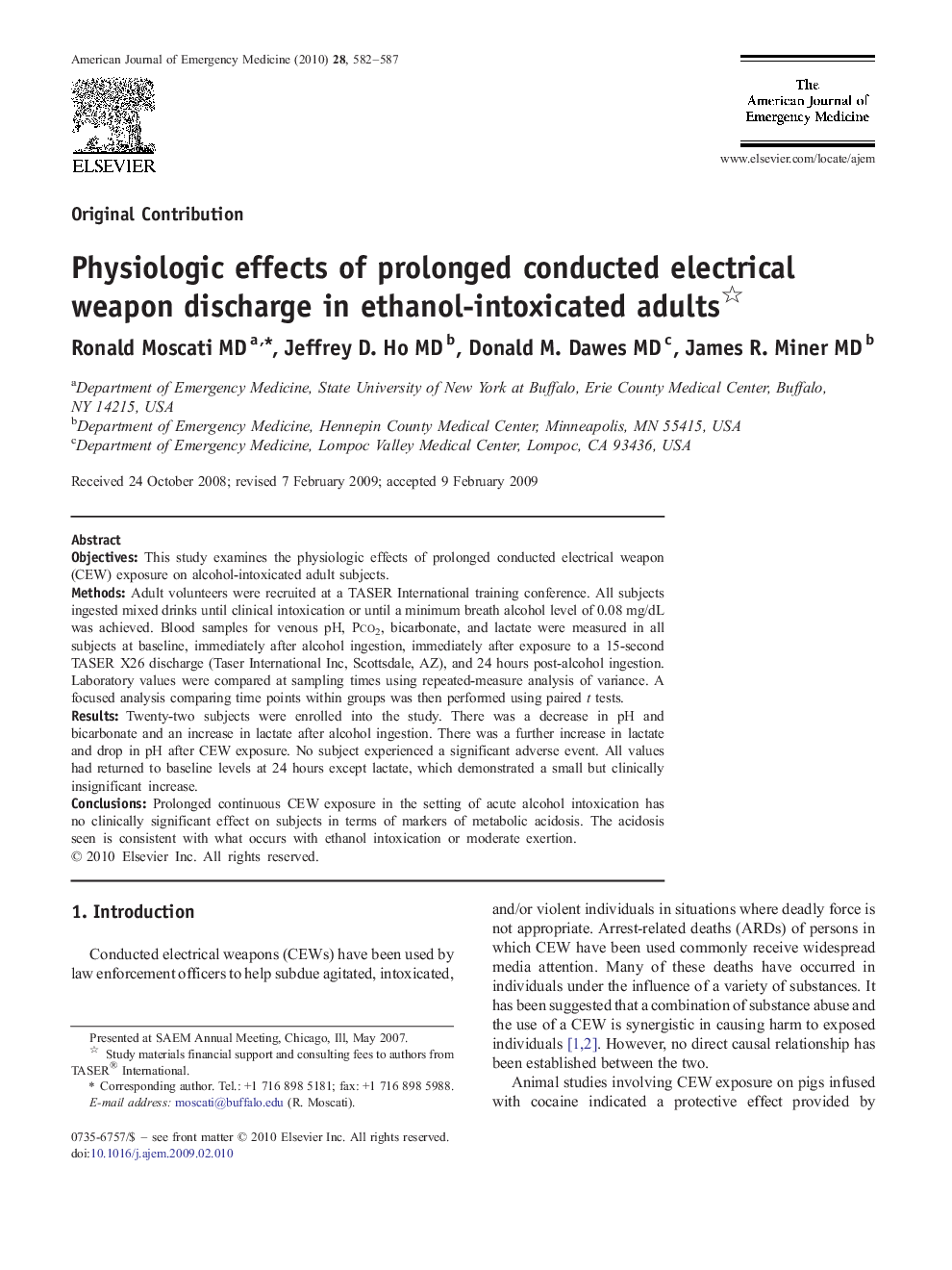| Article ID | Journal | Published Year | Pages | File Type |
|---|---|---|---|---|
| 3226617 | The American Journal of Emergency Medicine | 2010 | 6 Pages |
ObjectivesThis study examines the physiologic effects of prolonged conducted electrical weapon (CEW) exposure on alcohol-intoxicated adult subjects.MethodsAdult volunteers were recruited at a TASER International training conference. All subjects ingested mixed drinks until clinical intoxication or until a minimum breath alcohol level of 0.08 mg/dL was achieved. Blood samples for venous pH, Pco2, bicarbonate, and lactate were measured in all subjects at baseline, immediately after alcohol ingestion, immediately after exposure to a 15-second TASER X26 discharge (Taser International Inc, Scottsdale, AZ), and 24 hours post-alcohol ingestion. Laboratory values were compared at sampling times using repeated-measure analysis of variance. A focused analysis comparing time points within groups was then performed using paired t tests.ResultsTwenty-two subjects were enrolled into the study. There was a decrease in pH and bicarbonate and an increase in lactate after alcohol ingestion. There was a further increase in lactate and drop in pH after CEW exposure. No subject experienced a significant adverse event. All values had returned to baseline levels at 24 hours except lactate, which demonstrated a small but clinically insignificant increase.ConclusionsProlonged continuous CEW exposure in the setting of acute alcohol intoxication has no clinically significant effect on subjects in terms of markers of metabolic acidosis. The acidosis seen is consistent with what occurs with ethanol intoxication or moderate exertion.
